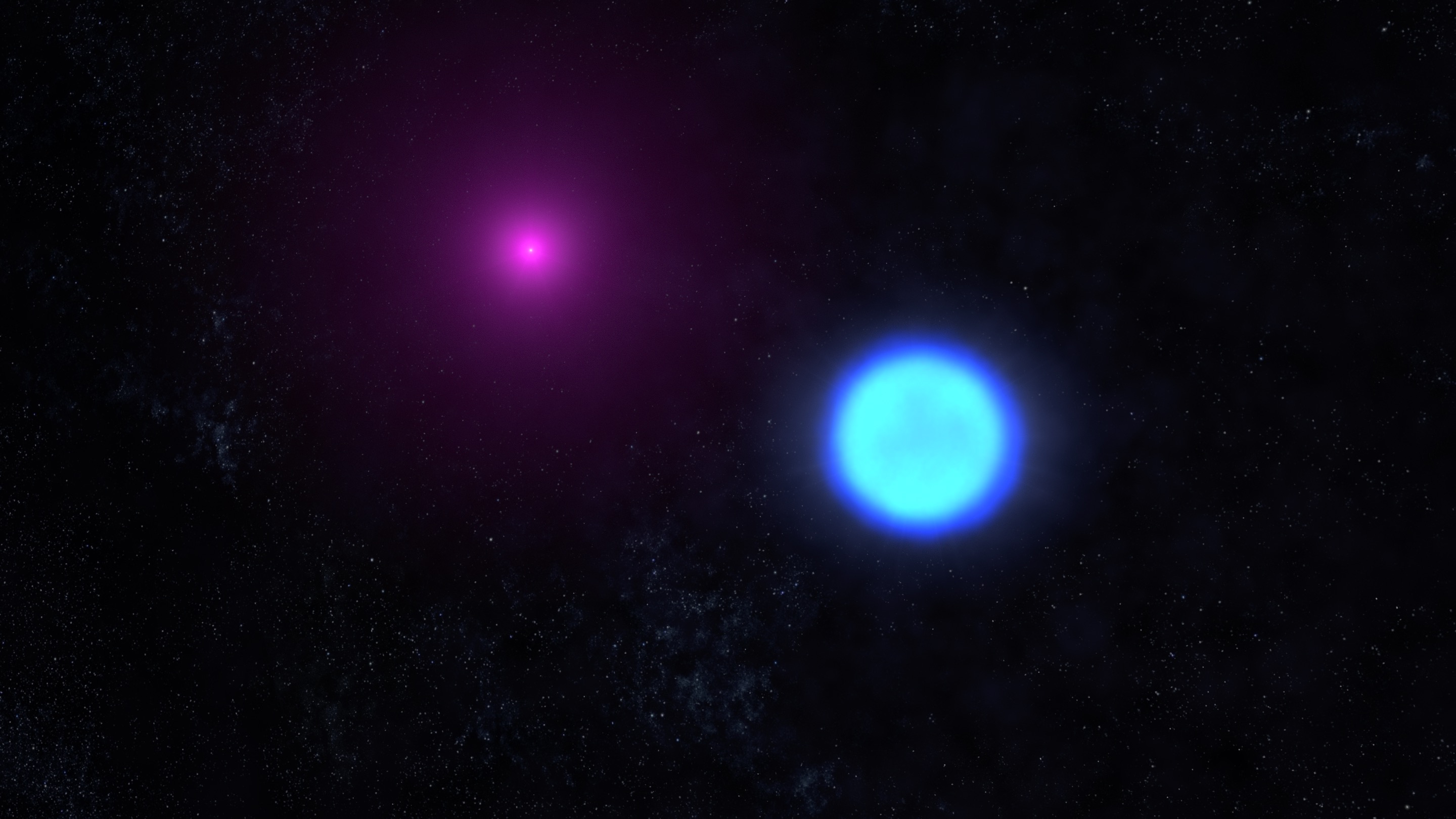Two Stars, One Powerful Glow

NASA's Fermi Gamma-ray Space Telescope finds record-breaking binary in a galaxy next door.
Using data from NASA's Fermi Gamma-ray Space Telescope and other facilities, an international team of scientists has found the first gamma-ray binary in another galaxy and the most luminous one ever seen. The dual-star system, dubbed LMC P3, lies within the expanding debris of a supernova explosion located in the Large Magellanic Cloud, a small nearby galaxy about 163,000 light-years away. The system contains a massive star and a crushed stellar core that interact to produce a flood of gamma rays, the highest-energy form of light. In gamma-ray binaries, outflows from both stars collide and accelerate electrons to near the speed of light. When these particles collide with the star's visible light, it receives a boost up to gamma-ray levels. Fermi observations show gamma-ray output from LMC P3 changes as the companion orbits the star. This variation lets astronomers study many of the emission processes common to other gamma-ray sources in unique detail. Watch the video to learn more.
Find out more about binary system LMC P3 in this video.

LMC P3 is composed of a hot, young star (blue) many times the sun's mass and what scientists think is a neutron star (magenta).

Fermi sees more gamma rays when the companion passes the star on the far side of its orbit (left) than when it’s on the near side (right).

This map of the entire gamma-ray sky shows the location of LMC P3 and known gamma-ray binary systems in our Milky Way galaxy.
For More Information
See NASA.gov
Credits
Please give credit for this item to:
NASA's Goddard Space Flight Center
Gamma-ray sky map courtesy of NASA/DOE/Fermi LAT Collaboration
-
Producer
- Scott Wiessinger (USRA)
-
Animator
- Scott Wiessinger (USRA)
-
Writer
- Francis Reddy (Syneren Technologies)
-
Project support
- Francis Reddy (Syneren Technologies)
Release date
This page was originally published on Thursday, October 6, 2016.
This page was last updated on Wednesday, May 3, 2023 at 1:48 PM EDT.
